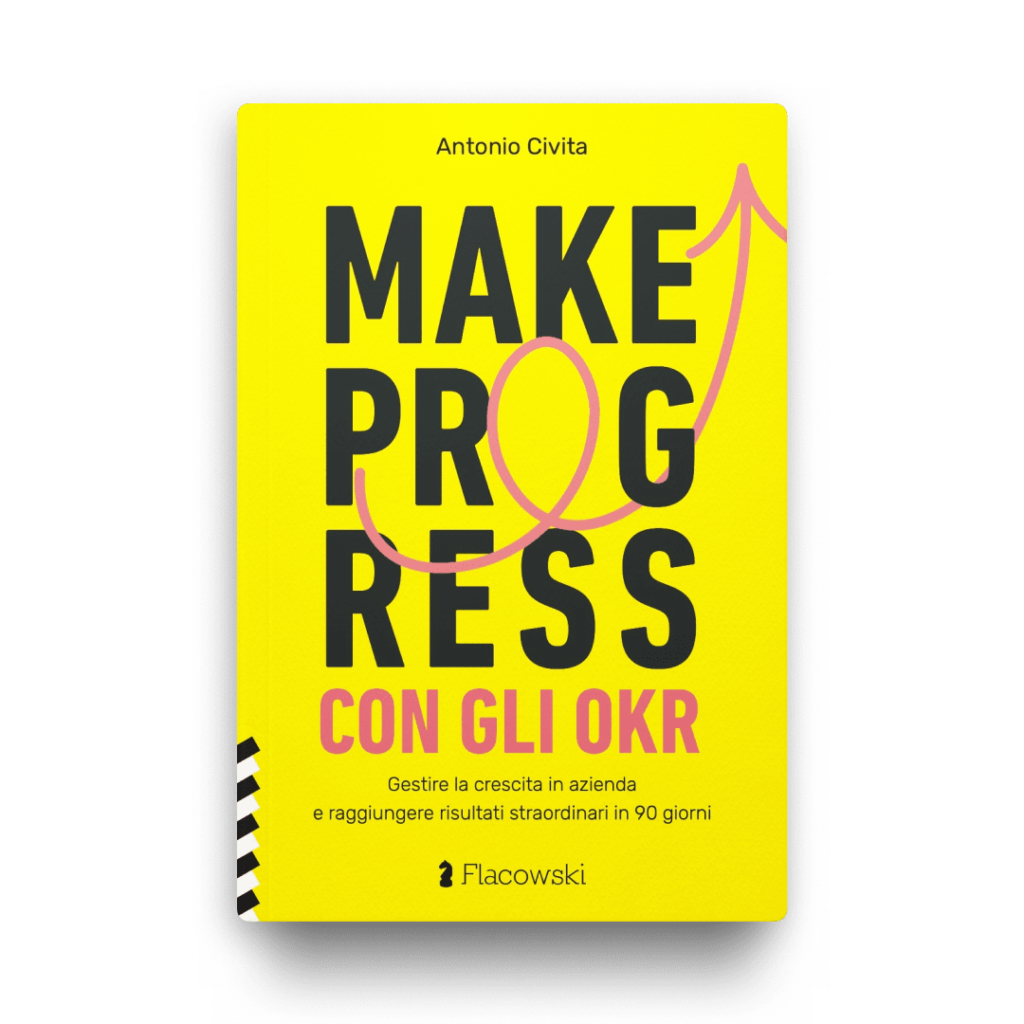BACKSTAGEs are always energetic events, where the community learns from the success stories of companies that are adopting the methodology MAKE PROGRESS. Many interesting questions always arise that are worth answering.
In this note here are the most profound questions with the most precise answers from the Turin date.
How do I know that the strategy I designed works?
Working on strategy is perhaps one of the most complex and stressful aspects in business, as for a leader it involves dealing with the uncertainty that what has been planned may not work until the signal comes that everything works!
The tangible sign that the strategy is working is the increase in the North Star Metric; that is, the only metric that can predict the success of the organization.
You might be tempted to look only at financial metrics to see if a strategy is working. It is true that these are important, but they present a problem: they move too slowly to be responsive.
NSM, on the other hand, represents the company’s ability to create value for customers and itself. If developed correctly, it changes on a daily basis allowing for patterns in strategic decisions and rapid corrective action.
The North Star Metric is the 9 proof of the execution of a good strategy and its effectiveness in bringing results on the income statement.
Go deeper into the topic by also reading:
- Trilogy: Leading the company with numbers One, Two, Three
- How NSM changes behavior
- In Sales Driven Organizations is the North Star Metric sufficient to measure growth?
Are OKRs applicable only to companies or also to other types of organizations?
It is true that OKRs have developed and spread in profit-oriented organizations, but managing strategy by objectives is critical for any individual or organization that wants to take the impact of executing its mission to a larger scale, and at a faster rate, than common management techniques would allow.
In fact, they are called mission-driven organizations.
Mission-driven organizations are not just companies holding profit-all companies need to create profit, if only to support their projects-they are also NGOs, nonprofits, individuals who are trying to change that part of the world they can influence with their projects.
They are resilient organizations, able to weather any market storm, because strategy execution is achieved not by great motivation, but by building systems that allow successes to be repeated at an increasingly rapid pace.
Also in STRTGY we have cases where MAKE PROGRESS with OKRs has been used in companies with a large and important mission. Such as in the case of the Amsterdam-based EGI Foundation . EGI Foundation is an NGO whose mission is to distribute computing power to scientific communities around the world.
I have recently trained some public administration employees responsible for bringing change to a system that is not driven by the same incentive system as the private world, but still needs to perform on a higher level of quality.
Bringing OKRs into these areas as well, but it has allowed them to be redefined as not only a business tool, but also a personal tool.
When you write your next OKR, I invite you to ask yourself this question, “What is the standard of quality that you are not willing, in any way, to compromise?”
Imagine describing with a simple formula, consisting of qualitative and quantitative goals, words and numbers, what is the minimum level of execution at which, the mission you believe in, deserves to be executed.
Suddenly the strategy becomes clear and enthusiasm spreads among the teams who will from that moment have an extra tool to achieve results unthinkable without the focus and precision that MAKE PROGRESS with OKRs brings within teams.
What are the signs of failure to adopt the methodology?
It is difficult to draw a line between full adoption of OKRs and failure. Each organization adapts OKRs to its own way of working. However, signs emerge during implementation that the OKR methodology is not working and requires deep reworking of the adoption program.
Here are the top six:
Number 1
Leadership deflects from OKR check-ins and moments, losing presence in meetings where they need to communicate progress on their goals or strategic initiatives are evaluated.
Number 2
Numbers become as much a threat as in the past, and managers use them to measure individual performance on activities more related to policy than to corporate strategy.
Number 3
Measurement and documentation of strategy becomes inconsistent as teams lose confidence in communicating the impact of their initiatives to management. As a result, feedback during check-ins also becomes inconsistent.
Number 4
Strategic clarity and prioritization effectiveness is reduced. Without confidence in the methodology, OKRs are not used to prioritize initiatives, and the backlog fills with projects that drain resources without impact on strategy and key outcomes.
Number 5
Goals and targets become less challenging because they are linked to a vicious cycle that increases the risk of not achieving minimum levels of satisfaction. Teams become more conservative.
Number 6
Transparency and visibility on activities is lost; silo work returns.
Most of these problems stem from a corporate culture that is not ready to change rapidly and adapt to the use of new tools that would simplify and objectify strategy.
Even at STRTGY we have had instances of failure, but there is one thing that still makes me proud of the work done with these teams. A typical feature of our implementation methodology: even if the team decides not to continue with the OKR methodology, the tools used remain valid.
It happens because MAKE PROGRESS with OKRs is a tool for strategy definition, measurement and acceleration. OKRs have been chosen as a system for measuring strategic execution. For some teams, especially in turbulent conditions, it is easier to use simple tools like KPIs to measure work and stay focused on a few key outcomes.

